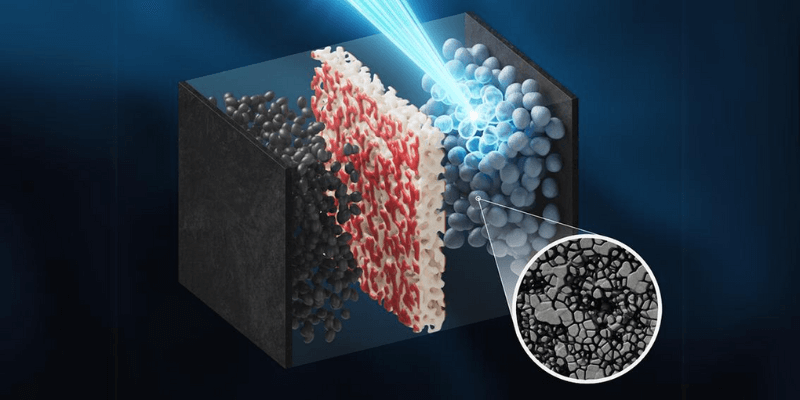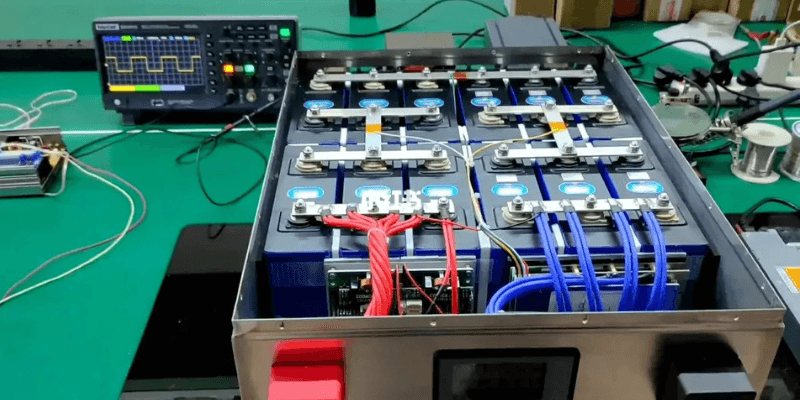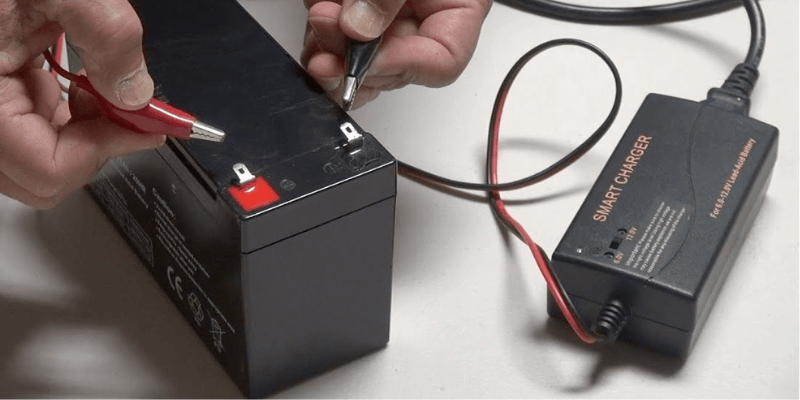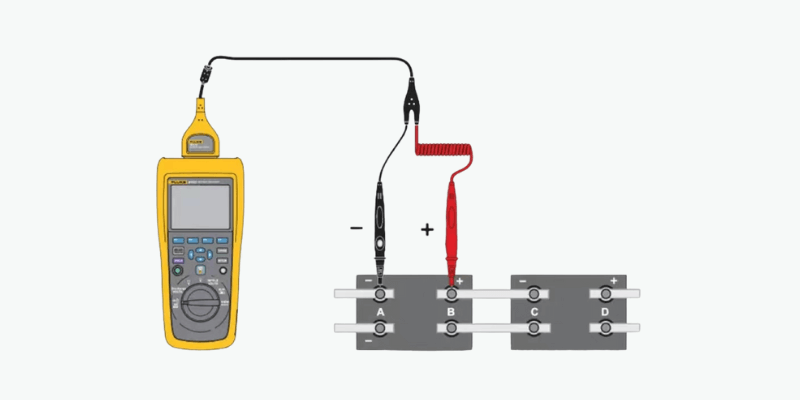Akumulatory żelaza litowego, znane ze swojego wysokości gęstość energii i długi Życie rowerowe, są coraz bardziej popularne w zastosowaniach, takich jak pojazdy elektryczne i magazynowanie energii odnawialnej. Właściwa opieka jest niezbędna dla optymalnej wydajności, długowieczności i bezpieczeństwa. Ten przewodnik bada najlepsze praktyki utrzymywania tych baterii, w tym protokoły ładowania i techniki przechowywania.
Co to jest bateria litowa?
Bateria fosforanu żelaza litowego (LifePo4 lub LFP) jest rodzajem baterii litowo-jonowej znanej z lekkiej struktury i wysokiej gęstości energii.
Większość akumulatorów żelaza litowego zawiera wiele komórek Lifepo4 i a BMS. Każda komórka zawiera katodę, anodę, separator, elektrolit i dwa bieżniki obecne. . anoda i katoda Przechowuj lit, podczas gdy elektrolitowe transfery pozytywnie naładowały lit przez separator. Ten ruch ładowania generuje woltaż, umożliwiając przepływ prądu elektrycznego z dodatniego terminala do zastosowania i z powrotem do ujemnego terminala.

Jak utrzymać baterię litową żelazną?
Akumulatory żelaza litowego mają ograniczone żywotność i ostatecznie stracą zdolność do trwałego utrzymywania opłaty. Tak więc właściwa opieka i konserwacja są kluczowe dla długowieczności.
Szacowana oczekiwana długość życia akumulatora litowego żelaza wynosi 5-15 lat, w zależności od użycia. Akumulator LifePo4 może dostarczyć do 2000 pełnych cykli ładowania lub 6000 częściowych cykli. Pełny cykl przesuwa się z w pełni naładowany do w pełni zwolniony, a następnie z powrotem do w pełni naładowany. Pozostawienie nieużywanych baterii przez dłuższy czas może skrócić ich żywotność i prowadzić do awarii.
Zalecamy prowadzenie co najmniej jednego pełnego cyklu konserwacji (ładunek do 100% SoC, rozładowanie do 100% DoD, a następnie ładuj do 50% SoC) co 6-12 miesięcy dla wszystkich nieużywanych akumulatorów i komórek litowych. Sprawdź przechowywane baterie pod kątem odpowiedniego OCV (napięcie otwartego obwodu) za pomocą poniższej tabeli, aby uzyskać minimalne zalecane napięcie przechowywania. Jeśli napięcie jest niskie podczas kontroli konserwacji, holo bateria zaleca w razie potrzeby ładowanie akumulatora.
| Zakres napięcia (v) | Litowy produkt fosforanowy żelaza |
| 3.3-3.4 | Indywidualna komórka |
| 13.2-13.6 | Pakiet baterii 12 V. |
| 26.4-27.2 | Pakiet akumulatora 24 V. |
| 39,6-40.8 | Bateria 36 V. |
| 52.8-54.4 | Pakiet baterii 48V |
Aby uzyskać lepsze utrzymanie ogniw lub akumulatorów, sprawdzaj je co sześć miesięcy pod kątem oznak końcowej korozji i problemów integralności przypadków. Unikaj używania uszkodzonych baterii, aby zapobiec zagrożeniom bezpieczeństwa.
Baterie LifePo4 mają powolne prędkości samozapisania podczas przechowywania. Jeśli jednak mają funkcjonalność Bluetooth lub Wi -Fi, szybkość rozładowania może wzrosnąć z powodu losowania mocy modułu. Regularne monitorowanie poziomu ładowania baterii jest niezbędne do zachowania jego zdrowia i utrzymania wydajności energii.
Aby ocenić zdrowie baterii, śledź czas działania aplikacji jako prosty metryka. Ustal linię bazową, rejestrując początkowy czas działania nowej baterii litowej do porównania w miarę starzenia się. Ten punkt odniesienia może się różnić w zależności od aplikacji i konfiguracji baterii.

Jak naładować baterię litową żelazną?
Ładowarka baterii specyficzna dla litu zapewnia pełny cykl ładowania. Nasze ładowarki LifePo4 wykorzystują inteligentne 3-stopniowe ładowanie do ożywienia głęboko rozładowanych baterii.
Ponadto zoptymalizowana technologia ładowania maksymalizuje zarówno wydajność, jak i żywotność, skutecznie wykorzystując pojemności baterii.
Dowiedz się więcej w artykule „Jak ładować baterie fosforan litowych (LifePo4)”.
Jaka szybkość ładowania przedłuży żywotność baterii z żelaza?
Ładowarki są wybierane na podstawie pojemności baterii. Akumulatory litowe mogą ładować z prędkością do 1 ° C (ich pełna pojemność), podczas gdy akumulatory ołowiowe powinny być ładowane poniżej c/3. Na przykład bateria litowa 9AH ładuje się przy 9 amperach, podczas gdy akumulator kwasowy ołowiu 9AH powinien ładować około 3 wzmacniaczy.
Aby przedłużyć żywotność baterii LifePo4 i skrócić przestoje, zaleca się naładowanie go w zakresie C/4 do C/2. W przypadku baterii 10AH oznacza to ładowanie od 2,5A do 5A, przy czym idealne jest 2,5A. Jeśli musisz wybrać ładowarkę 2A i 5A, wybierz ładowarkę 2A, aby zmaksymalizować żywotność akumulatora, pomimo dłuższego czasu ładowania około 5 godzin.
Prąd odcięcia ładunku jest zazwyczaj ustawiony między 2,5-5% pojemności baterii, co powoduje zakres prądu odcięcia około 0,25-0,50A dla przykładów 10ah. Większość ładowarek automatycznie obsługuje to odcięcie bez ręcznych regulacji.
Uniwersalne ładowarki oferują elastyczność wyboru różnych rodzajów chemii, zapewniając najlepsze zakresy napięcia i odpowiednie mechanizmy odcięcia po osiągnięciu pełnego naładowania. Na przykład ładowarki te mogą automatycznie wyłączać się na akumulatory litowe lub przełączać się w tryb ładowania pływakowego dla akumulatorów zamkniętych ołowiu (SLA), zwiększając bezpieczeństwo i wydajność procesu ładowania.

Przechowywanie długoterminowe
Podczas przechowywania baterii w perspektywie długoterminowej rozważ różne wymagania dotyczące baterii SLA i litu.
Przechowuj akumulatory SLA bliskie 100% stanowi ładunku (SOC), aby zapobiec siarczkowi, co zmniejsza pojemność z powodu gromadzenia się kryształu siarczanu. Akumulatory litowe powinny być przechowywane około 50% SoC, aby utrzymać stabilność w dodatnim terminalu i uniknąć utraty pojemności stałej. Aby uzyskać szczegółowe wytyczne dotyczące przechowywania baterii litowych, zapoznaj się z naszymi Dedykowany przewodnik.
Współczynniki samozadowolenia wpływają również na magazyn: Baterie SLA mają wysoki wskaźnik samodzielnego rozładunku i powinny być utrzymywane na ładowaniu zmiennoprzecinkowym w pobliżu 100% SoC. Natomiast akumulatory litowe mają niższą szybkość rozładowania i mogą wymagać minimalnego ładowania konserwacji, jeśli nie ma pasożytów, takich jak moduły Bluetooth.
Jak powstrzymać baterię litowo-jonową przed korodowaniem?
Holo Battery ma zintegrowane funkcje z naszymi Terminale baterii w celu zwalczania korozji. Jednak baterie mogą nadal korodować z czasem pomimo opieki.
Możesz zminimalizować korozję, wykonując następujące kroki:
- Przechowuj baterię w chłodnym, suchym środowisku, aby zmniejszyć korozję i przedłużyć jej okres przydatności.
- Uszczelnij zaciski za pomocą ochrony sprayu przed sklepami z częściami samochodowymi w celu optymalnego zapobiegania.
- Regularnie sprawdzaj i wyczyść zaciski baterii litowej miękką suchą szmatką, jeśli wydają się brudne, aby zapobiec późniejszym gromadzeniu się.

